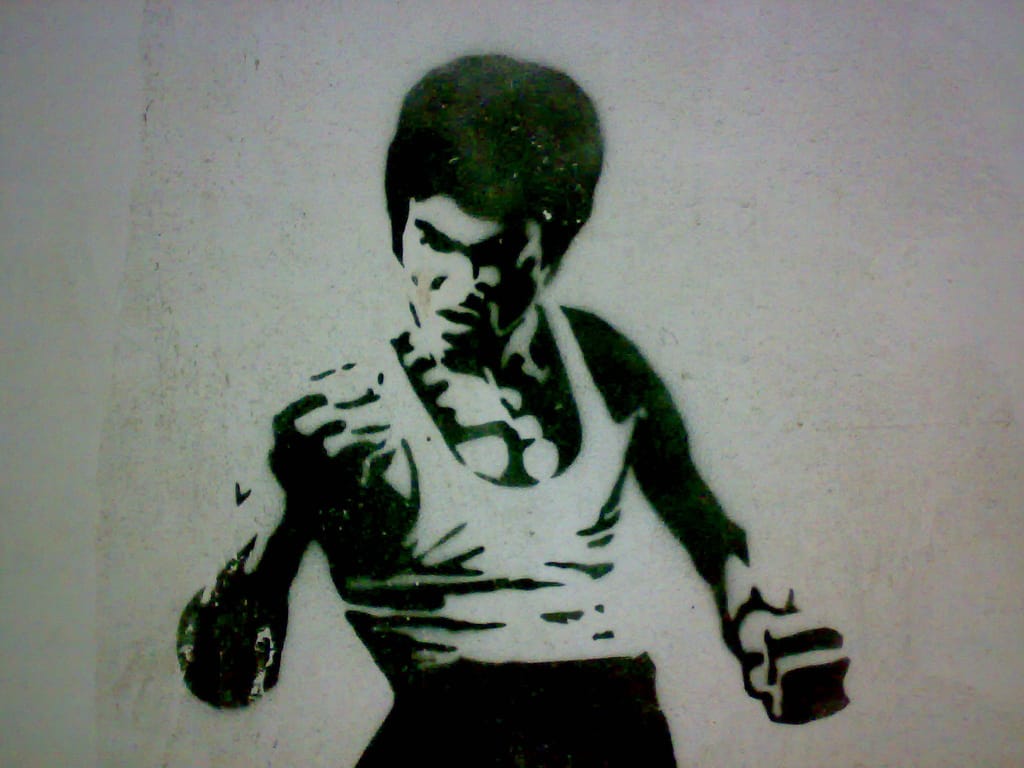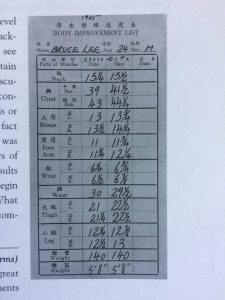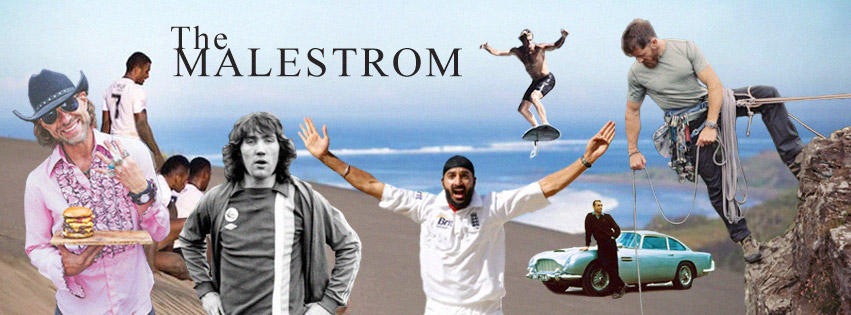
“In order to taste my cup of water you must first empty your cup. My friend, drop all of your preconceived fixed ideas and be neutral. Do you know why this cup is so useful? Because it is empty.” – Bruce Lee
Bruce Lee was without doubt one of the most iconic figures of the 20th Century, and to this day is recognised for his formidable personality, physique and approach to health and fitness. In Part 1 of this series we looked at Lee’s attitude and approach to Diet and Nutrition, but now our attention turns to his training routine. Bruce Lee was so far ahead of his time, you’d think he’d been sent from the future.
His memory lives on in all those who grew up watching his films and became fascinated by his magnitude and stature. But what exactly was it that made Lee so revered? Ultimately it was his incredible physique. He was a man that sought perfection, the ability to combine strength, power and speed coupled with a thirst for knowledge that was unabatable. He achieved a physical presence that in a time when the understanding of nutrition and supplementation was virtually inconceivable in comparison to modern day perspectives.
It’s with all this in mind that we head back into the archives and delve deeper into Bruce Lee’s approach to prowess as The MALESTROM takes a discerning look at his constantly evolving training regime based largely on the detailed notes he made and furthermore was illustrated in the fascinating book by John Little, ‘The Art of Expressing the Human Body.’
It is important to note at this point that the meticulous attention to detail with which Lee approached his training schedule, was nothing short of obsessive, the kind of discipline and exertion that could only really be expected from the most elite of professional athletes. One interesting example of this is that Lee would dedicate whole sessions to his forearms, his neck and of course his core abdominal muscles in much the same way that say a bodybuilder would obsess about the minutiae of physical development, with measurements etc. Bruce himself would make detailed notes on his gains and areas for improvement.

It is worth remembering that Lee’s influence wasn’t limited to the world of martial arts, in fact in the world of bodybuilding even to this day, over forty years since his passing, Lee’s physique is revered and admired for his extremely low body fat coupled with the ‘quality’ of his muscles.
“He probably had one of the lowest body fat counts of any athlete around. And I think that’s why he looked so believable [in his films]. There’s a lot of people that do all those [martial art] moves, and they do have skill, but they don’t look visually as believable or as impressive as Bruce Lee did. He was one of a kind.” – Arnold Schwarzenegger
As the story goes, while residing in Oakland California with his wife Linda, Lee received an invitation in the form of an ancient scroll demanding that he at once cease teaching Kung Fu to non-Chinese individuals. It was considered a most dishonourable act, and was strictly prohibited. As a caveat Lee’s only alternative was to accept the challenge of a fight with their leading man, it was like a red rag to a bull and Lee duly obliged. Later in the week his would be challenger and some leading figures in the martial arts community turned up at Lee’s school. They fought and within three minutes Lee had comfortably dispatched of his opposition and ‘tossed the entire group off the premises.’ However was unhappy with the amount of energy he had expended and with how drained his body felt. According to his then pregnant wife Linda,
“Although it took all of three minutes, he thought that the fight had lasted way too long and that it was his own lack of proper conditioning that made it such a lengthy set-to.”
Lee immediately set about finding alternative approaches to conditioning, consuming bodybuilding publications and any other source of physical training he could get his hands on, and in doing so set forth on his quest for physical perfection.What’s notable about Bruce Lee’s training regime and it’s evolution, is that at no point did he settle, Lee constantly strived and pursued new methods, he had an incredible thirst for knowledge and craved any new techniques and thoughts that could give him an advantage.

There is such a wealth of information in ‘The Art of Expressing the Human Body’, all based specifically on Lee’s personal notes and records that it would be a fruitless task to offer a detailed overview, however we will look at some of the specifics of his training methods and how you can incorporate these techniques into your training. Lee was interested in strength training from the perspective that there was a definite correlation between lifting weights and an increase in speed and endurance. He introduced weight training to his program performing three, 15-30 minute sessions a week. He understood that the ‘training motions used with barbells and dumbbells were natural body motions’ that were ‘perfectly adaptable to all muscle groups’, resulting in improved ‘mechanical efficiency’. To compliment his weight training Lee also incorporated Isometrics, he was seeking perfection. He wanted to build strength and power whilst maintaining his speed and flexibility, he viewed every muscle as serving a purpose, and wanted to utilise them as such,
“If you are talking about sport, that is one thing. But when you are talking about combat – as it is – well then, baby, you’d better train every part of your body.”
Lee used strength training in the belief that the stronger the individual, the faster and more durable he/she would be. Of the many studies he poured over he cited one in particular. In the 1950s, American swimming coaches introduced weights to their athletes training schedule and in doing so increased the strength in the upper body – arms, back and shoulders without reducing speed and endurance. Lee immediately saw the correlation between swimming in water and performing martial arts on dry land.
Lee put his newfound knowledge into practice by training with submaximal loads i.e. two thirds of his maximum output twice a week and then a maximum load once a week. He found the result was as effective as training maximum loads three times a week.
Initially Lee designed what he called the ‘General Development Routine’ which he performed on Tuesday, Thursday and Saturday before refining it and removing those exercises he saw as unnecessary, what was left was his 20 Minute Strength and Shape Routine. He had discarded the emphasis he had previously placed on arm training and focused more on compound exercises with much heavier weights, with an ever busying schedule due to his more frequent big screen commitments, this twenty minute routine was ideal and he performed this during the making of ‘The Big Boss’, ‘Fist of Fury’ and ‘The Way of the Dragon’. As a pre-workout warmup, website Dog Struggles states that he’d going for an initial jog with a dog.
- Clean and Press – 2 sets of 8 repetitions – Lee would incorporate a brief pause at each stage of the exercise but with no rest between reps, and only a very brief rest between sets.
- Squat – 2 sets of 12 repetitions – Lee would very slowly lower his body, but there would be no pause at the bottom position.
- Barbell Pullover – 2 sets of 8 repetitions – it is believed but not on record that Lee performed this exercise as a superset with the squat. Once again Lee would perform the exercise with a slow and steady motion.
- Bench Press – 2 sets of 6 repetitions – slowly lowering the barbell with a shoulder width grip, exhale as you return to the locked out position.
- Good Mornings – 2 sets of 8 repetitions – Lee used this to strengthen his lower back however on one occasion, damaged his fourth sacral nerve, something that would cause him pain for the remainder of his life. He later claimed this exercise could be performed without weight resistance, and just a barbell.
- Barbell Curl – 2 sets of 8 repetitions – Using an Olympic barbell at shoulder width, pause at the midway point before slowly lowering to starting position.
In addition to this as recalled by one of his students Dan Inosanto,
“Bruce would sometimes shadowbox with small weights in his hands, and he did a drill in which he punched for 12 series in a row – 100 punches per series – using a pyramid system of 1, 2, 3, 5, 7 and 10 pound weights – and then he would reverse the pyramid and go back down …. He had me do this drill and – man! – what a burn you got in your delts and arms!”
As for Bruce Lee’s most recognisable and defining asset his abdominals, he had once again developed a specialised routine. It included 5 major exercises, some of which he would perform everyday but never all of them.
- The Sit-Up – 15 to 20 repetitions per set – Lee used what we would now call a sit-up bench, at an incline. As Lee reached his knees in the upright part of the exercise he would hold the position for up to 2 seconds with his abs fully contracted before very slowly returning to the start point.
- Leg Raises – 15 to 20 repetitions per set – This will target the lower abdominals. Hanging from a chin up bar he would raise the legs about 18 inches past the parallel position before slowly lowering. Sometimes he would simply hold his legs in the raised position.
- The Twist – 50 repetitions minimum – Performed with a stick or such similar held across the back of your shoulders, stand upright before bending forward as far as possible, turn from the waist and try to touch the left end of the stick or bar to the right foot, straighten up then repeat with opposing side.
- Frog Kicks – 15 to 20 repetitions – Hanging from a chin up bar, raise the knees up to the chest and repeat.
- Side Bends – 15 to 20 repetitions, 2 to 4 sets – Standing with your feet wide apart, hold a dumbbell in one hand and bend your torso sideways until the dumbbell is level with your knee.
Notes suggested that at the end of your abdominal routine, a session of contraction or tensing will further enhance your results, also that it is only necessary to perform roughly a similar number of reps as you would for any other muscle.
You can order a copy of ‘The Art of Expressing the Human Body’ HERE
Click the banner to share on Facebook


